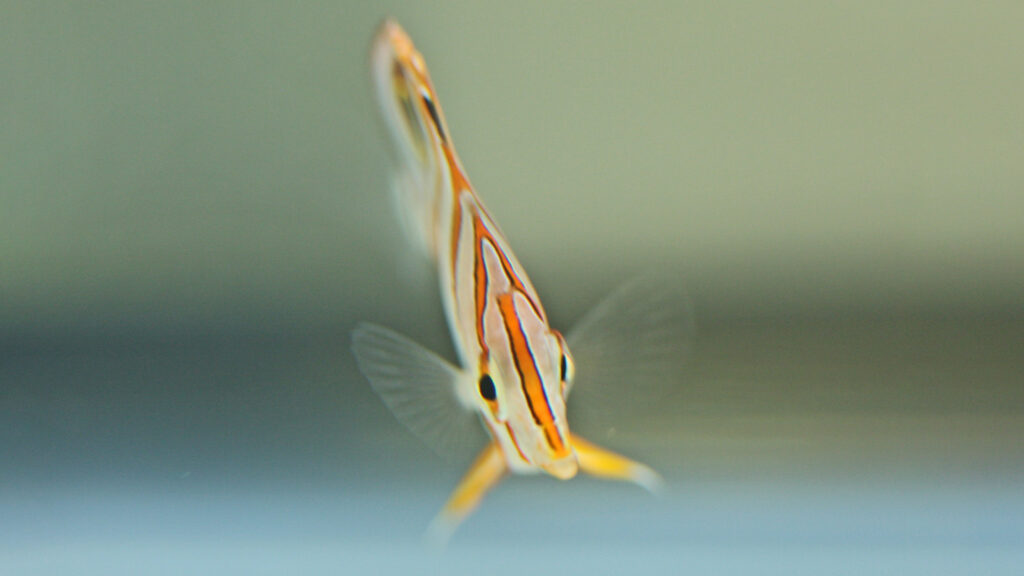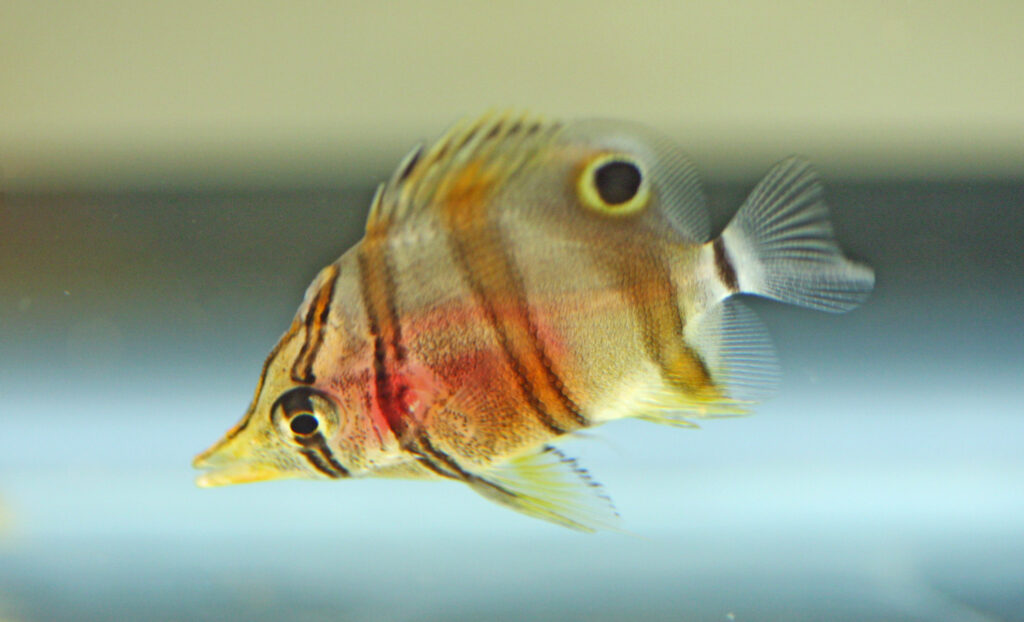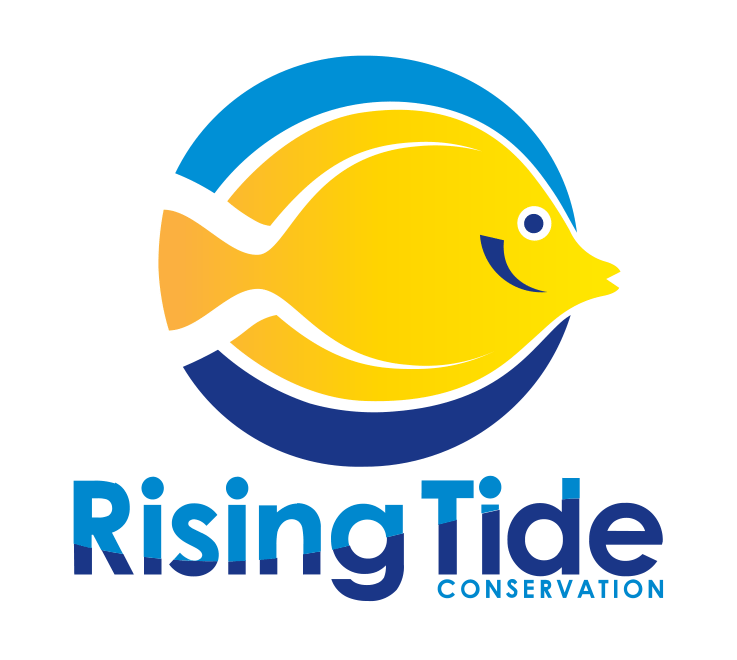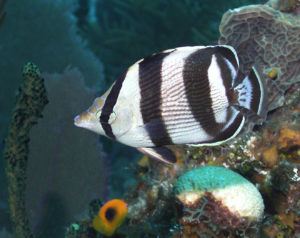UF/IFAS IRREC Successfully Aquacultures the Copperband Butterflyfish, Chelmon rostratus! 3 May 2021

23 June 2021 | Dr. Ohs Lab at UF/IFAS IRREC: The first cohort is 116 days post hatch (DPH) and all have adult coloration completely developed. Unfortunately, we recently lost two, both seemed to have swim bladder issues and used a lot of energy to stay in the water column. The remaining 44 juveniles are doing well and are housed in four tanks. They are very social and react to all movements near the tank. They are voracious eaters and we are feeding them four to six times a day. They are eating frozen adult brine shrimp, frozen cyclopods, dry diet, and adult copepods.
The second cohort is 65 DPH, there are about 65-75 of them that are housed in three tanks. They are eating adult copepods and nauplii several feedings a day.
Broodstock Pair A has continued to spawn two days in a row every 14-17 days, however there still has not been any fertilization. The most recent spawn had 47,000 eggs. We tried changing the water, as well as not changing the water- none of these attempts resulted in fertilization.

19 May 2021 | Dr. Ohs Lab at UF/IFAS IRREC: The first cohort is 81 days post hatch, and all 46 are still doing well and growing. We are continuing to feed train them onto dry diets by mixing live artemia and frozen foods with dry diets, they are eating well. We are planning to move them into larger tanks soon.
The second cohort is 30 DPH. We have four tanks, one has about a dozen and they are larger than the larvae in other tanks. The other three of four tanks have 100-150 each. All are eating lots of copepods and are starting to eat larger sized copepods. This cohort had no mortality through swim bladder inflation (which occurs at 8 DPH) and stayed really strong with super high survival. Near flexion (~20DPH) we had a couple tanks that did not do well, and around 25DPH we unfortunately lost some on the surface of a tank, possibly due to a thin oil layer from feeds.
Broodstock Pair A recently had two spawns, with a total of over 60,000 eggs but no fertilization. We plan to do a full water change again, since we saw fertilization after a full water change earlier this year (which ultimately resulted in the first cohort). Their spawning schedule appears to be two spawns in a row every 14-17 days.
We are planning to do larval feeding research with the next fertilized spawn. Katie’s (Katie McCord, RTC funded MS student) microspheres show the first feeding larvae eat parvo, apocyclops copepods, and rotifers readily. So we need to define how long they need copepods before they can survive on rotifers.
This work is being done at the UF/IFAS Indian River Research & Education Center by Dr. Cortney Ohs, Katie McCord (RTC funded MS student), Morgan Bronson (MS student), Audrey Beany (Biologist), Peter Woodward (Live Feeds Technician), and John Marcellus (Aquaculture Systems Maintenance), with research funding from Rising Tide Conservation.



